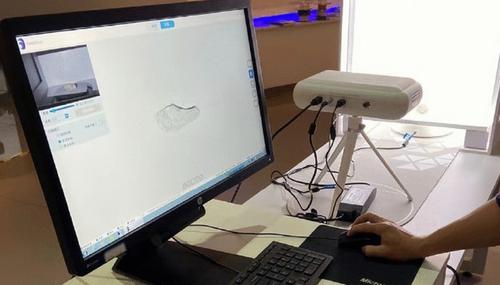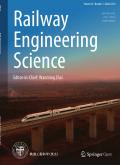下卧垫道床细观力学动态特性分析
IF 5.4
1区 工程技术
Q2 TRANSPORTATION SCIENCE & TECHNOLOGY
引用次数: 0
摘要
摘要对高速铁路下垫层道床的细观动力学特性进行了研究。采用三维扫描技术建立了道砟颗粒几何不规则的精细离散元模型,采用离散元法-多柔体动力学(DEM-MFBD)方法建立了轨道-轨枕-道砟床的三维动力学模型。本文分析了列车动载作用下带USPs的压载床的细观力学动力学,并通过室内试验验证了模型的正确性。结果表明,USPs的变形增加了轨枕与压载颗粒之间的接触面积,进而增加了它们之间的接触次数。随着颗粒状碴床深度的增加,接触面积增大,碴颗粒之间的接触力逐渐减小。在弹性USPs的作用下,降低了镇流器颗粒之间的接触力,降低了镇流器床的整体振动水平。颗粒碴床的沉降主要发生在轨枕底部较浅的位置,安装弹性USPs可以有效减少碴颗粒的应力和碴床的沉降。本文章由计算机程序翻译,如有差异,请以英文原文为准。

Analysis of mesoscopic mechanical dynamic characteristics of ballast bed with under sleeper pads
Abstract The meso-dynamical behaviour of a high-speed rail ballast bed with under sleeper pads (USPs) was studied. The geometrically irregular refined discrete element model of the ballast particles was constructed using 3D scanning techniques, and the 3D dynamic model of the rail–sleeper–ballast bed was constructed using the coupled discrete element method–multi-flexible-body dynamics (DEM–MFBD) approach. We analyse the meso-mechanical dynamics of the ballast bed with USPs under dynamic load on a train and verify the correctness of the model in laboratory tests. It is shown that the deformation of the USPs increases the contact area between the sleeper and the ballast particles, and subsequently the number of contacts between them. As the depth of the granular ballast bed increases, the contact area becomes larger, and the contact force between the ballast particles gradually decreases. Under the action of the elastic USPs, the contact forces between ballast particles are reduced and the overall vibration level of the ballast bed can be reduced. The settlement of the granular ballast bed occurs mainly at the shallow position of the sleeper bottom, and the installation of the elastic USPs can be effective in reducing the stress on the ballast particles and the settlement of the ballast bed.
求助全文
通过发布文献求助,成功后即可免费获取论文全文。
去求助
来源期刊

Railway Engineering Science
TRANSPORTATION SCIENCE & TECHNOLOGY-
CiteScore
10.80
自引率
7.90%
发文量
1061
审稿时长
15 weeks
期刊介绍:
Railway Engineering Science is an international, peer-reviewed, and free open-access journal that publishes original research articles and comprehensive reviews related to fundamental engineering science and emerging technologies in rail transit systems, focusing on the cutting-edge research in high-speed railway, heavy-haul railway, urban rail transit, maglev system, hyperloop transportation, etc. The main goal of the journal is to maintain high quality of publications, serving as a medium for railway academia and industry to exchange new ideas and share the latest achievements in scientific research, technical innovation and industrial development in railway science and engineering. The topics include but are not limited to Design theory and construction technology System dynamics and safetyElectrification, signaling and communicationOperation and maintenanceSystem health monitoring and reliability Environmental impact and sustainabilityCutting-edge technologiesThe publication costs for Railway Engineering Science are fully covered by Southwest Jiaotong University so authors do not need to pay any article-processing charges.
 求助内容:
求助内容: 应助结果提醒方式:
应助结果提醒方式:


